Mastering trading with the Ultimate Oscillator equips traders with a powerful tool to analyze market conditions and make informed decisions. By measuring momentum dynamics across multiple timeframes and identifying overbought or oversold conditions, the oscillator offers valuable buy and sell signals. Effective strategies involve looking for divergences, confirming signals with moving averages, and managing risk. Its multi-timeframe design enhances accuracy, outperforming single-timeframe indicators. Exploring further will reveal how to optimize strategies, interpret signals, and maximize the oscillator's benefits for successful trading.
Ultimate Oscillator Indicator Overview
The Ultimate Oscillator, a versatile technical analysis tool, provides traders with a thorough assessment of momentum dynamics across different timeframes. By measuring momentum over short-term, medium-term, and long-term periods, this oscillator offers traders a holistic view of market conditions. With inputs from 7, 14, and 28 periods, it combines price data to generate signals that help identify potential buy opportunities and overbought conditions. The scale of 0 to 100 allows traders to gauge the strength of momentum, making it easier to spot trend reversals and possible entry points.
Traders can utilize the Ultimate Oscillator to make informed decisions based on the signals it provides. By paying attention to divergences with price action, traders can identify potential buy signals and overbought levels, helping them navigate the market with more confidence. Understanding the impact of different timeframes on the reliability of these signals is essential for traders looking to master the art of trading with the Ultimate Oscillator.
Understanding Oscillator Formula
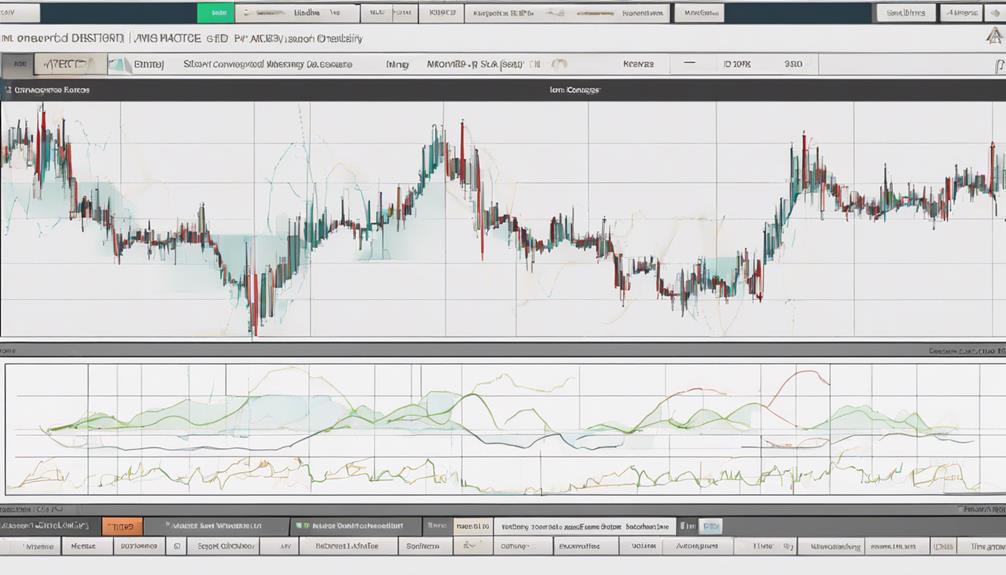
Utilizing a complex interplay of Buying Pressure (BP) and True Range (TR) values across varying timeframes, the Ultimate Oscillator formula intricately calculates market momentum dynamics. This formula combines BP and TR values over 7, 14, and 28 periods, applying weightings to BP based on these timeframes to provide a holistic view of momentum.
By computing a weighted sum of BP values, the formula effectively assesses market momentum, helping traders identify overbought and oversold conditions. The Ultimate Oscillator formula is designed to offer a detailed perspective on price momentum by analyzing weighted BP values across multiple timeframes.
This approach allows traders to gain insights into market dynamics that may not be apparent when looking at single timeframe indicators. Understanding the intricacies of the Ultimate Oscillator formula is essential for traders seeking to master the art of interpreting market momentum and making informed trading decisions.
Effective Trading Strategies

Building on an understanding of the Ultimate Oscillator formula, traders can develop effective trading strategies that leverage market momentum dynamics for informed decision-making. Ultimate Oscillator traders often look for divergences between price movements and the oscillator to anticipate potential trend reversals. By combining this oscillator with other technical analysis tools and considering multiple timeframes, traders can enhance the accuracy of their signals. One common strategy is to watch for buy signals when the Ultimate Oscillator crosses above 70, indicating overbought conditions, and sell signals when it drops below 30, signaling oversold conditions. Additionally, confirming these signals with moving averages can provide further validation for trading decisions. By incorporating these elements into their trading approach, traders can better navigate market fluctuations and improve their overall trading performance.
| Aspect | Description |
|---|---|
| Buy Signals | Ultimate Oscillator crossing above 70 |
| Sell Signals | Ultimate Oscillator dropping below 30 |
| Confirmation Signals | Moving averages and multiple timeframes analysis |
Interpreting Oscillator Signals
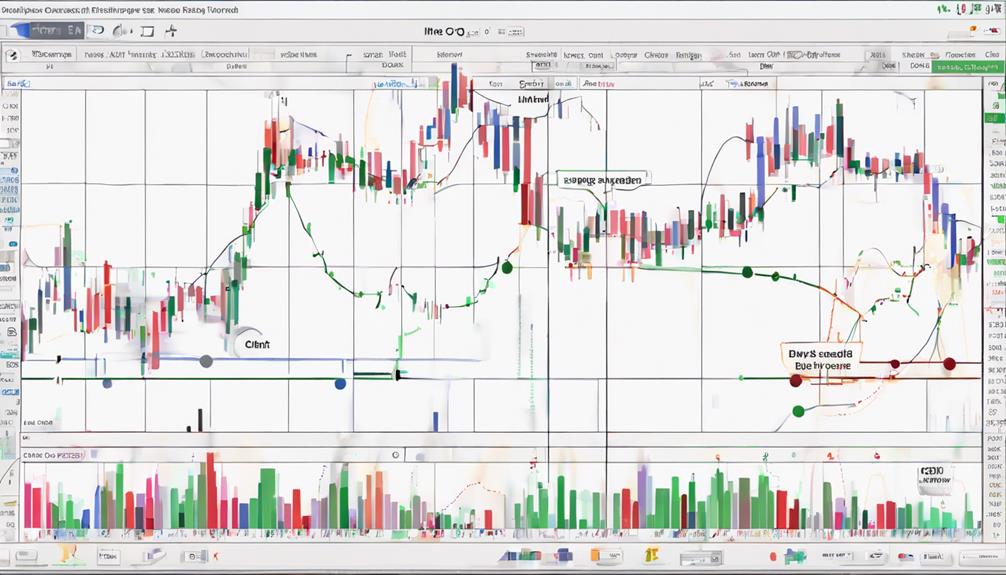
Analyzing Oscillator Signals plays a crucial role in informing traders about market conditions and potential price movements. When the Ultimate Oscillator signals rise above 70, it indicates overbought market conditions, suggesting a potential upcoming reversal or correction. Conversely, values below 30 on the Ultimate Oscillator suggest oversold market conditions, implying a possible buying opportunity.
Detecting bullish and bearish divergences with the Ultimate Oscillator is essential for identifying potential trend reversals. Bullish divergence occurs when the price makes a lower low while the oscillator makes a higher low, signaling a possible upward price movement. On the other hand, bearish divergence indicates a potential downward price movement.
Confirming signals with moving average crossovers can further enhance the reliability of Ultimate Oscillator signals. Additionally, considering multiple timeframes when interpreting these signals can greatly improve accuracy and provide a more thorough understanding of market trends and potential trade opportunities.
Practical Trading Applications
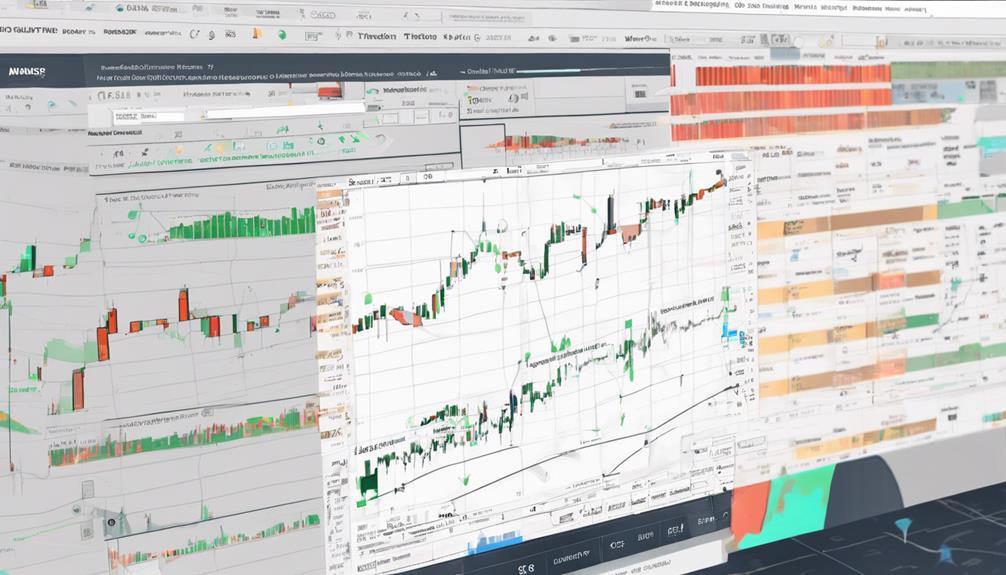
The practical trading applications of the Ultimate Oscillator encompass various key points:
- Entry and exit strategies
- Risk management techniques
- Incorporation of market analysis tools
Understanding how to effectively use the oscillator for timing entry and exit points can greatly enhance trading outcomes. Additionally, employing risk management strategies alongside the oscillator's signals can help traders navigate market volatility with more confidence and precision.
Entry and Exit Strategies
When implementing entry and exit strategies in trading using the Ultimate Oscillator, it is essential to identify key overbought and oversold conditions for effective decision-making.
- Identify Overbought Conditions: Watch for the Ultimate Oscillator crossing above 70 as a signal that the market may be overbought.
- Utilize Oversold Signals: Consider potential entry points when the Ultimate Oscillator drops below 30, indicating oversold conditions.
- Look for Bullish Divergence: Pay attention to bullish divergence between price and the oscillator for potential buy signals.
- Watch for Bearish Divergence: Be cautious of bearish divergence between price and the Ultimate Oscillator, which could signal a potential exit or short opportunity.
Risk Management Techniques
Effective risk management techniques are essential in practical trading applications to safeguard trading capital and optimize overall portfolio performance. Implementing stop-loss orders is critical to manage risk effectively and protect trading capital.
Utilizing position sizing strategies helps control the amount of capital at risk per trade, reducing potential losses. Diversifying the portfolio spreads risk across different assets, decreasing overall exposure to market fluctuations.
Trailing stop orders can lock in profits and minimize losses as a trade progresses favorably. It is important to regularly review and adjust risk management techniques based on market conditions and individual trade performance to guarantee long-term success in trading with the Ultimate Oscillator.
Market Analysis Tools
In trading, practitioners often rely on a variety of market analysis tools to enhance their decision-making processes and optimize trading strategies. When utilizing the Ultimate Oscillator, incorporating various market analysis tools can provide valuable insights for traders. Here are some key practical applications:
- Understanding the Ultimate Oscillator: Learn how it measures momentum across different timeframes.
- Generating Buy and Sell Signals: Utilize divergences with price action to identify potential entry and exit points.
- Impact of Different Timeframes: Recognize how varying timeframes can affect the thoroughness of signals.
- Enhancing Trading Strategies: Combine the Ultimate Oscillator with other indicators for a more exhaustive approach to market analysis.
Best Indicator Comparison
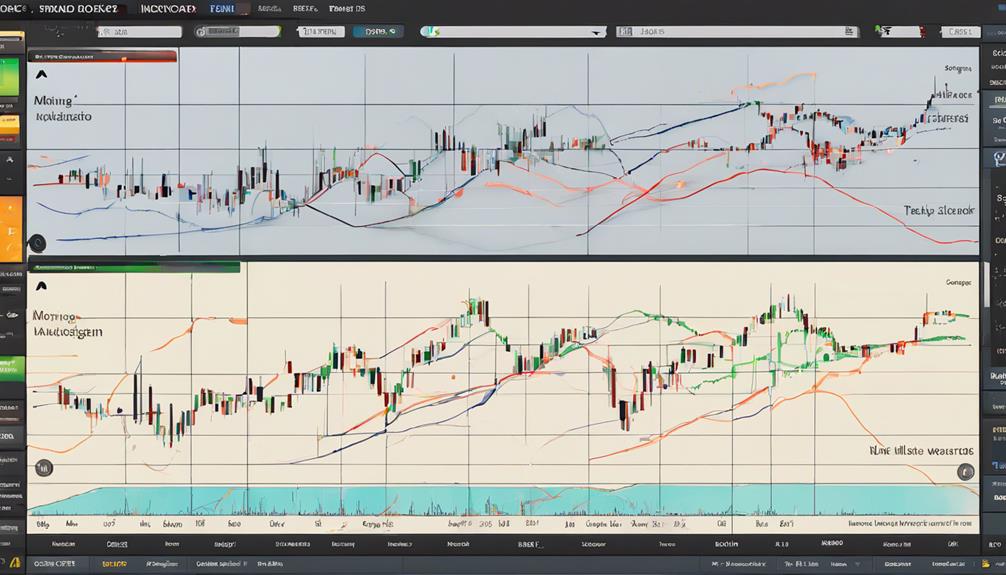
Analyzing the effectiveness of various oscillators, evaluating indicator performance, and comparing signal accuracy are essential aspects of optimizing trading strategies.
By scrutinizing how different indicators complement the Ultimate Oscillator, traders can make more informed decisions based on a thorough assessment of market conditions.
This comparison allows for a deeper understanding of the strengths and weaknesses of each indicator, leading to more precise entry and exit points in trading.
Oscillator Effectiveness Analysis
Rarely does an oscillator exhibit the thorough effectiveness and precision in generating trade signals as the Ultimate Oscillator, especially when compared to single-timeframe indicators. The Ultimate Oscillator stands out due to its unique construction, combining 7, 14, and 28 periods for enhanced accuracy. Here's how it excels in oscillator effectiveness analysis:
- The Ultimate Oscillator outperforms single-timeframe indicators by providing fewer but more reliable trade signals.
- Divergences between price and the Ultimate Oscillator serve as strong indicators of potential trend reversals.
- Its multi-timeframe design reduces volatility, making trade signals more effective.
- Traders seeking precision over frequency of trades benefit significantly from the Ultimate Oscillator's approach.
Indicator Performance Evaluation
Utilizing a comparative analysis approach, the evaluation of indicator performance in trading reveals key insights into the effectiveness and reliability of various technical tools. The Ultimate Oscillator stands out by combining momentum from multiple timeframes, offering fewer but more reliable signals than single-timeframe indicators.
Its ability to identify divergences between price movements and the oscillator itself enhances the accuracy of buy and sell signals. The multi-timeframe design of the Ultimate Oscillator helps reduce volatility and smoothes out price fluctuations, making it appealing for traders seeking precise trades over frequency.
Signal Accuracy Comparison
Expanding on the efficiency of the Ultimate Oscillator in providing precise trade signals, a comparative analysis of signal accuracy among various indicators reveals invaluable insights for traders seeking peak performance in their decision-making processes.
- The Ultimate Oscillator offers more reliable trade signals compared to single-timeframe indicators.
- It uses divergences between price and momentum for accurate buy and sell indications.
- Multi-timeframe construction reduces volatility and smoothens price movements.
- The Ultimate Oscillator generates fewer but more precise signals for traders preferring less frequent trades.
Oscillator Vs. MACD
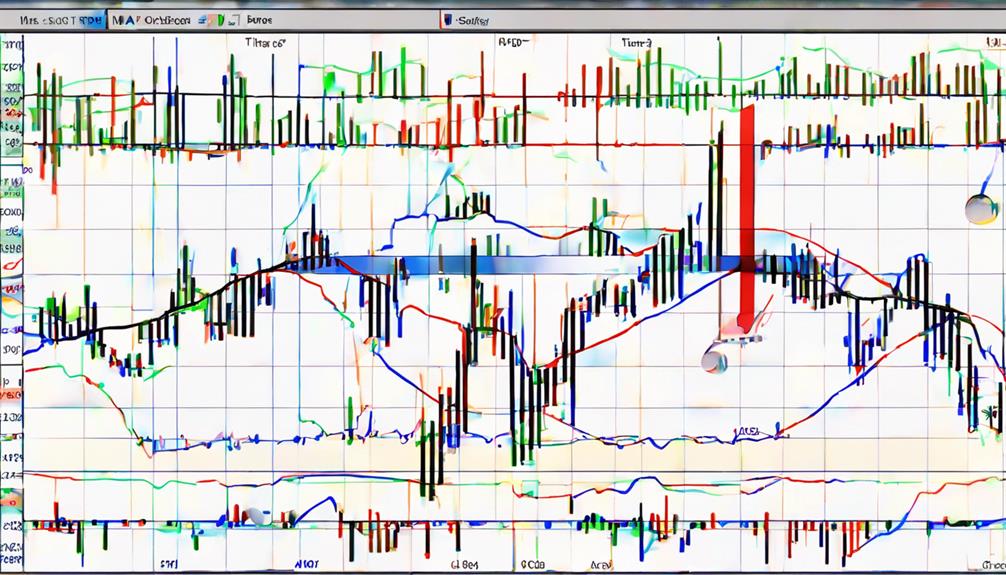
When comparing the Ultimate Oscillator with the MACD in trading analysis, it is essential to understand their distinct methodologies and applications.
The Ultimate Oscillator is a momentum indicator that assesses price momentum over multiple timeframes, signaling overbought and oversold conditions.
On the other hand, the MACD measures the relationship between two moving averages, indicating trend changes and shifts in momentum.
While the Ultimate Oscillator focuses on identifying buying and selling opportunities based on momentum, the MACD emphasizes trend confirmation and momentum strength.
Traders often use these indicators in conjunction to gain a thorough understanding of market conditions and to develop well-rounded trading strategies.
By incorporating both the Ultimate Oscillator and MACD into their analytical toolkit, traders can make more informed decisions and react to changing market dynamics effectively.
Understanding the nuances of these indicators can greatly enhance trading strategies and improve overall performance in the financial markets.
Oscillator Vs. RSI
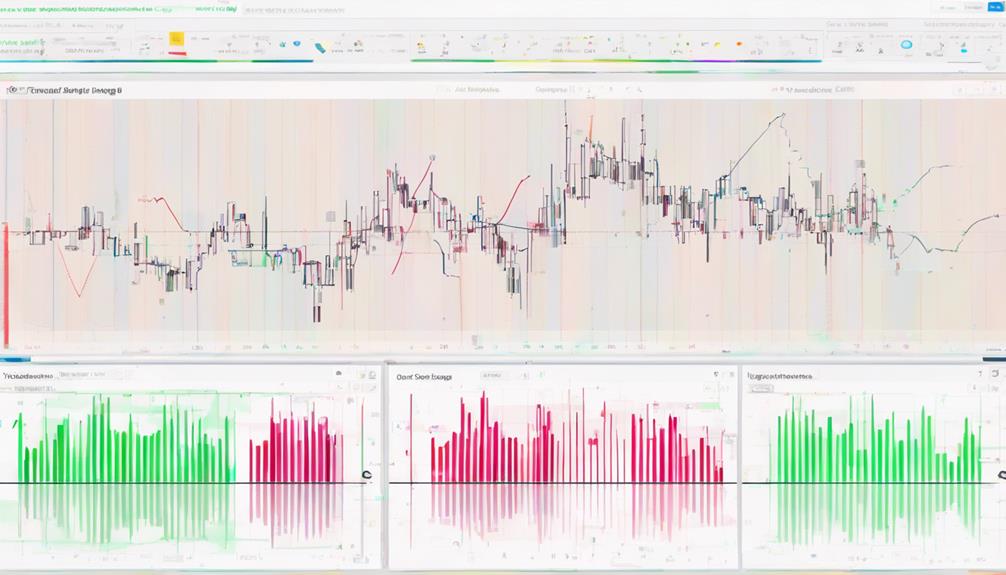
When comparing the Ultimate Oscillator to the RSI, it becomes apparent that the former offers a thorough analysis of momentum across various timeframes, while the latter concentrates on momentum within a singular timeframe.
The Ultimate Oscillator's methodology incorporates weighted averages and multiple periods to gauge market conditions, contrasting with the RSI's focus on overbought or oversold levels for trend reversals.
Understanding these distinctions can provide traders with valuable insights into the nuances of market momentum and potential trading opportunities.
Oscillator Uniqueness Explained
How does the Ultimate Oscillator's multi-timeframe approach compare to the single-timeframe focus of the Relative Strength Index (RSI) in measuring price momentum?
The Ultimate Oscillator, with its unique methodology, stands out from the RSI due to its consideration of various timeframes simultaneously. Here are four key distinctions:
- Timeframe Incorporation: Ultimate Oscillator uses 7, 14, and 28 periods, whereas RSI focuses on a single timeframe.
- Holistic View: Ultimate Oscillator combines short, intermediate, and long-term trends for a thorough analysis of momentum.
- Overbought/Oversold Identification: Ultimate Oscillator is designed to identify these conditions across multiple timeframes.
- In-depth Analysis: Ultimate Oscillator offers a broader perspective on price momentum compared to the more singular approach of RSI.
RSI Comparison Insights
In comparing the Ultimate Oscillator with the Relative Strength Index (RSI), it becomes evident that each oscillator's unique characteristics play an important role in providing distinct insights into market momentum.
The Ultimate Oscillator's utilization of multiple timeframes offers a thorough perspective on momentum, considering short, intermediate, and long-term trends through weighted calculations.
On the other hand, the RSI, focusing on a single timeframe, is more responsive to short-term price movements, making it valuable for pinpointing potential overbought or oversold conditions in the near future.
Traders often combine both oscillators to confirm signals, leveraging the strengths of each to enhance their technical analysis strategies effectively. This strategic combination allows for a more detailed understanding of market dynamics and aids in making well-informed trading decisions.
Trading With Oscillator Tips
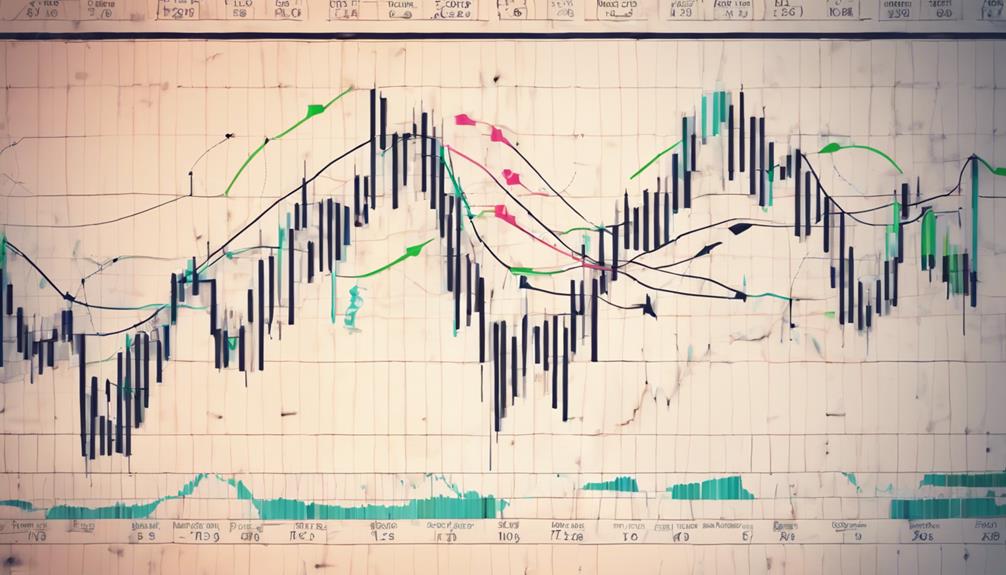
Utilizing oscillator tips in trading can greatly enhance decision-making processes and improve overall trading strategies. When trading with the Ultimate Oscillator, consider the following tips:
- Identifying Overbought Conditions: Watch for the Ultimate Oscillator value rising above 70, indicating potential selling opportunities in the market.
- Utilizing Divergences: Keep an eye out for divergences between price movements and the Ultimate Oscillator, as they can signal trend reversals and serve as valuable entry/exit points.
- Incorporating Multiple Timeframes: Enhance the accuracy of your market analysis by utilizing the Ultimate Oscillator across different timeframes, aiding in the identification of overbought and oversold levels.
- Integrating with Other Technical Indicators: Combine the Ultimate Oscillator with complementary technical indicators to refine your trading strategies and bolster decision-making processes.
Implementing Oscillator in Trading

The successful implementation of oscillators in trading hinges on strategic integration with diverse technical indicators to enhance decision-making processes and validate trading signals. When utilizing the Ultimate Oscillator, it is vital to identify overbought and oversold conditions to generate accurate trade signals.
By combining the Ultimate Oscillator with other technical indicators, traders can enhance the robustness of their strategies and increase the reliability of their trading decisions. The Ultimate Oscillator can serve as a valuable trend-following indicator, providing insights into market momentum across different timeframes.
However, it is important not to solely rely on the Ultimate Oscillator for trading decisions. To conduct a thorough analysis, traders should incorporate multiple indicators into their strategies, allowing for a more holistic view of the market dynamics.
Oscillator Advantages

The advantages of using oscillators in trading lie in their ability to provide a structured approach to analyzing market conditions. They offer valuable insights into potential buying or selling opportunities. By incorporating various timeframes, oscillators like the Ultimate Oscillator can filter out market noise and generate more reliable signals. This aids traders in making informed decisions.
Understanding the benefits of utilizing oscillators can lead to improved trading accuracy and enhanced risk management strategies in volatile market environments.
Oscillator Benefits Explained
Harnessing the power of the Ultimate Oscillator in trading provides a strategic edge due to its ability to reduce volatility and deliver precise buy and sell signals through the amalgamation of three distinct timeframes.
- The Ultimate Oscillator reduces volatility by combining three different timeframes for a more reliable signal.
- It offers precise buy and sell indications through divergences between price action and the oscillator.
- This oscillator generates fewer but more accurate trade signals compared to single-timeframe indicators.
- Traders preferring less frequent trades benefit from the Ultimate Oscillator's multi-timeframe construction.
Advantages of Using Oscillators
Utilizing oscillators in trading provides a strategic advantage by offering a thorough analysis of market dynamics through multi-timeframe evaluation. The Ultimate Oscillator, known for its multi-timeframe analysis capabilities, generates fewer but more reliable trade signals compared to single-timeframe indicators.
Traders benefit from the precise buy and sell indications provided by divergences in oscillators, particularly those seeking accurate signals over frequent trades. By using oscillators like the Ultimate Oscillator, traders can avoid falling prey to false positives that may arise from simple price crossovers.
These advantages underscore the importance of incorporating oscillators into trading strategies to enhance decision-making and navigate market fluctuations more effectively.
Why Use an Oscillator?
Employing an oscillator in trading endeavors can provide traders with a nuanced understanding of market conditions and signal reliability. Here are some advantages of using an oscillator like the Ultimate Oscillator:
- Identification of Overbought and Oversold Conditions: Helps in pinpointing potential reversal points.
- Reliable Trade Signals: Generates fewer but more dependable signals compared to other indicators.
- Accurate Buy and Sell Indications: Divergences offer precise entry and exit points for trades.
- Smooth Price Momentum View: Multi-timeframe construction reduces noise, giving a clearer picture of price trends.
Oscillators, through their precision in signal generation and focus on trade signals, can be valuable tools for traders seeking to make informed decisions in the market.
Oscillator Limitations
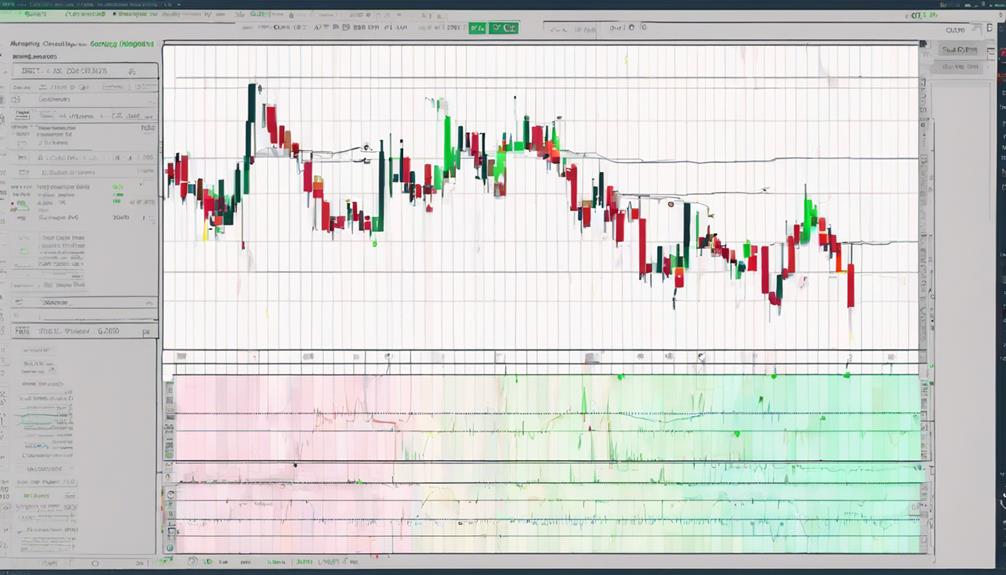
Amidst its notable advantages, the Ultimate Oscillator also exhibits limitations that warrant careful consideration in trading strategies. The oscillator may have slower reactions to sudden price changes, potentially leading to missed trading opportunities or delayed signals. In low volatility or sideways markets, its effectiveness might diminish, and there is a risk of false signals during specific market conditions. To mitigate these limitations, it is advisable to use the Ultimate Oscillator in conjunction with other confirmation tools for a more thorough analysis.
| Oscillator Limitations | Description |
|---|---|
| Slower Reactions | The Ultimate Oscillator may react more slowly to rapid price movements. |
| Missed Trading Opportunities | In certain market conditions, the oscillator might overlook potential trading chances. |
| Delayed Signals | Traders could experience delays in receiving signals from the Ultimate Oscillator. |
| Low Volatility | The oscillator may be less reliable in periods of low volatility or when markets are ranging. |
Oscillator Trading Considerations
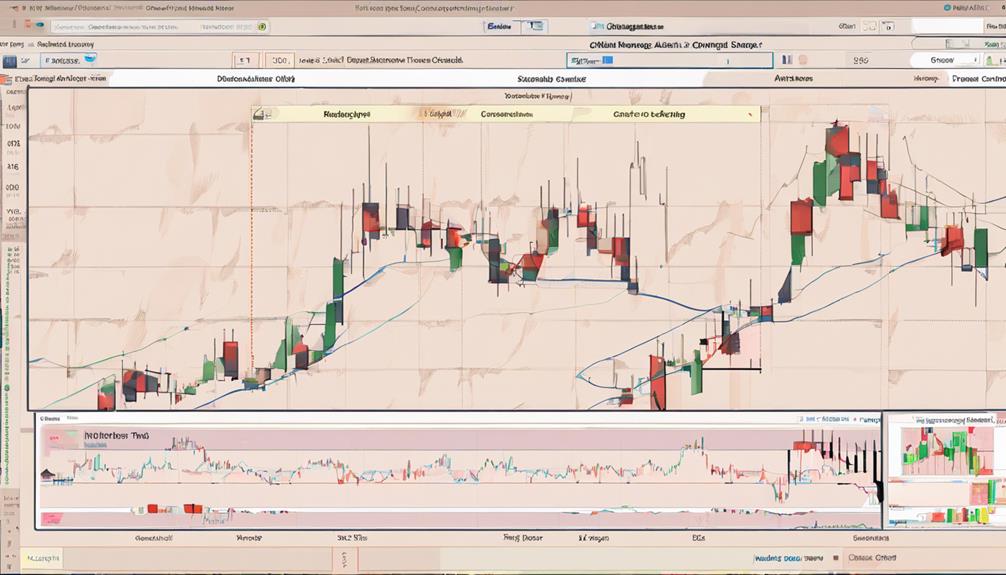
Oscillator trading strategies hinge on meticulous analysis of momentum indicators such as the Ultimate Oscillator to pinpoint trends accurately. When delving into oscillator trading considerations, it's important to keep the following points in mind:
- Identifying Overbought and Oversold Conditions: Oscillators like the Ultimate Oscillator help traders determine when a market is overbought or oversold, indicating potential reversal points.
- Utilizing Divergence: Divergences between price action and the Ultimate Oscillator can provide valuable insights into potential reversals or the strength of a trend.
- Comprehensive Trend Analysis: The Ultimate Oscillator's unique feature of combining short, medium, and long-term momentum allows for a more holistic view of the prevailing trend.
- Confirming Signals: To enhance accuracy, traders often complement oscillator trading strategies with confirming signals from other technical indicators, ensuring a more robust analysis of market conditions.
Considering these aspects in oscillator trading can help traders make informed decisions and navigate the complexities of the financial markets effectively.
Backtesting and Optimizing Strategies

In the domain of trading strategies, an essential step towards enhancing performance and reliability involves thorough backtesting and strategic optimization. Backtesting entails testing a trading strategy using historical data to evaluate its performance under past market conditions. This process helps traders gauge how the strategy would have fared previously and allows for adjustments to enhance future performance.
Optimizing strategies, on the other hand, involves fine-tuning various parameters based on backtesting results. By refining entry and exit signals, risk management protocols, and position sizing through optimization, traders can work to improve the overall effectiveness of their trading approach.
Backtesting and optimizing strategies are pivotal components in the development of robust and profitable trading methodologies. By utilizing historical data to refine signals and enhance risk management, traders can work towards creating strategies that are better equipped to navigate the complexities of the financial markets.
Frequently Asked Questions
How Do You Trade With Ultimate Oscillator?
Entry signals with the Ultimate Oscillator involve buying when the oscillator crosses above 70 and selling when it drops below 30.
Exit strategies can be based on profit targets or trailing stop-loss orders. Risk management is vital, using stop-loss orders to limit losses.
Trend identification is key for aligning trades with the prevailing market direction. Position sizing should be determined based on risk tolerance and trade setup.
Technical analysis tools can complement Ultimate Oscillator signals. Backtesting can validate the effectiveness of the strategy.
Which Oscillator Is Best for Trading?
When evaluating oscillators for trading, factors like MACD vs. Stochastic, Bollinger Bands strategies, Fibonacci retracement techniques, Candlestick patterns analysis, Moving averages applications, Support and resistance levels, and Volume indicators importance must be considered.
Each oscillator has its unique strengths and weaknesses, catering to different trading styles and strategies. Traders should conduct thorough research and backtesting to determine which oscillator aligns best with their objectives and risk tolerance.
How to Use Awesome Oscillator in Trading Strategy?
Using the Awesome Oscillator in a trading strategy involves identifying entry signals and exit strategies based on its position relative to the zero line. Traders can manage risks by setting stop-loss orders and incorporating timeframes analysis to confirm trends.
Divergence patterns can signal potential reversals, while volatility analysis helps gauge market conditions. Overall, the Awesome Oscillator aids in trend identification and can be a valuable tool for traders seeking to optimize their trading decisions.
What Is the Difference Between RSI and Ultimate Oscillator?
The Relative Strength Index (RSI) and Ultimate Oscillator differ in their calculation methods and timeframe considerations.
RSI primarily compares recent gains and losses to assess momentum, while the Ultimate Oscillator incorporates buying pressure and true range values over multiple periods for a more extensive perspective on momentum.
RSI is more responsive to price changes, offering quicker signals, while the Ultimate Oscillator provides a thorough view by analyzing short, medium, and long-term momentum trends.
Conclusion
To guarantee, ultimately, to take into account, the Ultimate Oscillator serves as a valuable tool for traders to analyze market trends and make informed decisions. By understanding its formula, utilizing effective trading strategies, and interpreting signals accurately, traders can maximize their success.
Despite its limitations, the oscillator offers numerous advantages and can be a key component in trading strategies. It is essential for traders to take into account backtesting and optimization to guarantee the effectiveness of their trading strategies.
